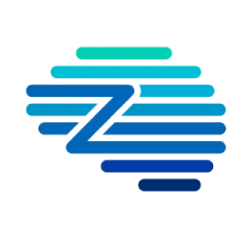Why Savings Tracking is Essential for Procurement
For procurement teams, it is now more important than ever to accurately track cost savings and value delivery. With increasing budget scrutiny amidst economic uncertainty, procurement must substantiate its strategic influence through well-governed savings tracking.
At its core, tracking procurement savings is keeping track of and measuring the real cost savings and avoidance that are made possible by negotiations, process improvements, sourcing, and other plans. The value unlocked by procurement is visible thanks to this.
For an enterprise, credibility, monitored savings, and finance must be in line. Expense reductions that have a direct financial statement impact should be the main emphasis of procurement. Making savings efforts known enhances support as well.
If done right, savings tracking helps sustain savings programs and provides input to improve future performance. It cements procurement’s seat at the table when framing budgets and growth plans.
The best practices for savings tracking will be covered in this blog, including classification, stakeholder alignment, and avoiding breaches. When procurement execution is executed with precision and accurate savings tracking, teams can show how much value can be created.
Key Types of Savings
Procurement value stems not just from pricing discounts or rebates during contract negotiations. The excellence of procurement savings results in a myriad of indirect financial benefits. A narrow view misses the broader, multifaceted savings arising from procurement work. Rigorous tracking brings this “savings iceberg” to the surface.
Realizing the full potential of procurement to drive value requires capturing often overlooked savings from sourcing and supply chain activities. Let’s explore key procurement savings types and best practices for tracking them.
Hard Savings: The Cornerstone
Real cost savings from improved product or service pricing agreed with suppliers are referred to as “hard savings.” The most visible form of savings, hard savings deserve prime focus when determining procurement’s impact aligning with financial principles. Hard savings, however, only paint a partial picture. Beyond the immediate cost savings that become apparent through thorough tracking, procurement activity generates financial benefits.
Also Read: A Guide to Effective Cost Reduction Strategies in Procurement
Soft Savings: The Hidden Contributors
The money saved via cost avoidance by re-engineering demand, discovering alternative supply sources, improving standards, etc. without sacrificing quality is known as “soft savings.” Utilizing appropriate baselines, new expenses, and tracking techniques determine soft savings. Enlightening soft savings draws attention to the underappreciated value of procurement, enhancing its standing as a value creator as opposed to a mere spender.
TCO Savings: The Strategic Lever
Savings from efficiency throughout the product lifecycle are revealed when expenses are analyzed in terms of TCO, or total cost of ownership. Better upfront pricing and lower ancillary costs—such as those for operations, maintenance, disposal, etc.—are the key sources of TCO savings. When category managers examine spend via a TCO lens, they can identify strategic possibilities for procurement savings to pursue during negotiations and performance reviews.
Working Capital Savings: The Cash Flow Booster
Working capital savings, or increasing cash flows through better payment terms, inventory optimization, etc., are becoming increasingly important for firms. Using interest rates, tracking systems provide transparency by valuing longer payment terms. In an unpredictable and volatile
environment, working capital savings provide cash flow visibility and control, which ensure organizational resilience and make thorough savings tracking essential.
Also Read: Realizing Savings in Indirect Spend: A Guide for Procurement Teams
Aligning Procurement and Finance
Procurement tracker and finance play equally vital roles in spend management for maximizing value. Yet disconnects between the functions often obstruct accurate savings tracking and realization.
Let’s examine frequent procurement-finance misalignments that result in value slippage and explore best practices for enhanced collaboration.
Bridging Perspective Gaps
Discussions concerning the establishment of baselines damage the reliability of savings claims. Finance exposes irrational bases that artificially increase procurement contributions. The functions need to work together to establish category-specific criteria for benchmark-based savings calculations.
This divergence in outlooks causes savings leakage unless resolved through systematic reconciliation of claimed and realized figures. Aligning workflows and calculating savings with consistent, mutually agreed methodologies is vital.
Agreeing on Calculation Methodologies
Discussions concerning the establishment of baselines damage the reliability of savings claims. Finance exposes irrational bases that artificially increase procurement contributions. The functions need to work together to establish category-specific criteria for benchmark-based savings calculations.
Connecting claimed pipeline savings with realized savings also calls for a shared process between functions instead of working in silos. This requires unifying systems, automating validations between contracts and invoices, and maintaining an audit trail.
In summary, procurement and finance must align perspectives, workflows, and methodologies with executive sponsorship for transparency into the savings delivery process without leakage at any stage.
Avoiding Value Leakage
All the rigorous sourcing work culminating in hard-won savings leaks away without systematic savings tracking, governance, and realization procedures between procurement and finance. Let’s examine the key causes of the pervasive challenge of savings leakage and potential remedies.
- Maverick Spend: Business users can avoid contracts, which results in value erosion when policies are not enforced, procurement tools like catalogs are adopted, and guided buying compliance is lacking.Also Read: Five Ways to take Control of Maverick Spend!
- Non-Standard Invoicing: Suppliers can overcharge if invoices aren’t validated against contract terms for pricing, early payment penalties, etc. leading to contract leakage.
- Compliance Gaps: Non-compliances lead to value slippage from subpar contract performance and can range from suppliers failing to achieve agreed-upon SLAs to procurement failing to closely monitor KPIs.
Tracking Realized Savings
Requiring invoices to be completely validated against contract requirements is essential for precise savings calculation. Reconciliation becomes rigorous, swift, and error-free when 3-way matching invoices, orders, and contracts are automated.
Without correctly tracking savings through the stages of downstream realization, finance is unable to appropriately acknowledge the upstream efforts made in procurement. Invoices hold the key to avoiding leakage.
Enforcing compliance requires procurement tools like eProcurement, Supplier Management, and Contract Lifecycle Management systems to have common master data on business users, suppliers, and agreements.
Reporting and Gaining Buy-In
Tracking savings rigorously is fruitless unless effectively reported across the enterprise for transparency and promotion. Let’s examine best practices for savings reporting and evangelization.
Communicating Savings Accurately
For credibility, savings figures must be calculated conservatively with auditable underlying assumptions. Inflated savings eventually get called out, eroding stakeholder trust. Finance partnership ensures integrity.
Engagement is ensured via savings reporting that is audience-tailored and focuses on financial consequences that matter to them rather than merely procurement KPIs. Hard savings and profit effects must be communicated to gain C-suite support.
Promoting Adoption of Savings Initiatives
Although tracking is essential, it does not maximize savings in and of itself. Adoption of procurement initiatives and cost-saving technologies, such as supplier risk management, contract lifecycle management, and guided buying catalogs, must occur throughout the entire organization.
This calls for the implementation of training initiatives, two-way lines of communication with business users, and the motivational linking of savings success to specific KPIs. Reward programs incentivize the usage of procurement systems.
Public Recognition and Rewards
For stakeholder buy-in to maximize savings, social validation is essential. Setting a good example and rewarding staff engagement are achieved by showcasing successful efforts through newsletters, all-hands meetings, and yearly supplier awards.
Rewards and recognitions funded by the executive branch are intended to encourage greater collaboration in future projects, both for external supplier partners and internal change advocates who minimize costs.
To sum it up, accurate savings reporting, securing the adoption of underlying initiatives through change management, and publicly celebrating wins are pivotal for tracking efforts to ultimately enhance bottom-line value.
Postscript
Procurement produces multi-dimensional savings – from negotiated pricing to cost avoidance and cash flow improvements. Isolating only hard savings severely underestimates function contributions.
Zycus’ iSave offers flexible tracking, validation, and reporting of diverse savings types across the enterprise. Our automation engine traces claimed figures through realization, proactively identifying and tackling savings leakage risks across the contract lifecycle for maximum value capture.
Watch Video: Leverage Zycus procurement savings solutions to enhance operational efficiency
We provide actionable, tailored reports communicating both procurement metrics and financial impacts for credibility among stakeholders, ensuring initiatives achieve intended ROI.
Discover complete visibility and control over your procurement savings tracking process with built-in, market-leading best practices. Request a demo today!
Related reads:
- Cost Avoidance vs. Cost Savings: What’s the Major Difference?
- A Guide to Effective Cost Reduction Strategies in Procurement
- eBook: Procurement’s Cost Savings Playbook: An Executive’s Guide to Sourcing Savings
- Realizing Savings in Indirect Spend: A Guide for Procurement Teams
- Whitepaper: 5 Steps to navigate from Opportunities to Savings
- Whitepaper: Smart Procurement for Sustainable Savings
- Whitepaper: Speeding up Procurement Savings without the Fear of Crashing
- Whitepaper: 6 Steps to Reduce Costs and Improve Cashflows
- Whitepaper: Mastering Indirect Spend Five keys to Success



























































